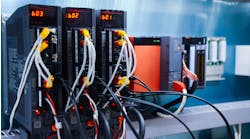Many professionals might say the best way to improve at any job is by learning from mistakes. However, the chemical industry can’t afford to take that approach. After all, errors at plants can cost production, revenue and even lives. There were at least six accidents at U.S. chemical facilities during a 13-month period spanning 2006 to 2007, and together they killed nine people, injured 23, destroyed two plants, damaged 90 homes, forced the evacuation of 17,000 residents, and shut down one refinery, says the Associated Press. Billions of dollars of revenue also were lost.
More than 40% of all plant incidents stem from some form of human error, estimates the Abnormal Situation Management Consortium (www.asmconsortium.com), which studies the root causes of plant upsets. Because of human nature, people follow procedures — even formal ones — differently based on their experiences and intuition.
This leads not only to outright errors but to variability in operations. For instance, one shift may produce a better product than another shift because some of its operators have learned a few tricks of the trade over the years.
Operators frequently struggle to find the right balance between reliable and consistent execution of procedures and plant downtime or idle production capacity. At many sites, the balance is left to the operator’s experience (supported by written checklists and best practices) and the results, predictably, can vary significantly.
Deviation from best practices and procedures can be costly. Common consequences include:
- Inefficient procedures reduce operator efficiency.
- Extended time to execute a procedure leads to loss of production capacity.
- Improper execution results in delays, equipment damage or potential safety risks.
Making the situation even worse, when veteran operators retire, they too often don’t pass their knowledge along to others.
So, the chemical industry faces some crucial challenges — to avoid human mistakes that can compromise safety as well as efficiency and reliability, and to capture operators’ experience and expertise to decrease differences between shifts and ensure product consistency.
Technology can help address these challenges. In particular, integrating automated procedures into a Distributed Control System (DCS) can help operators do their jobs better and thus boost a plant’s operational and financial performance.
Automated procedures
New tools enable standard operating procedures and best practices to be encoded into the DCS itself — so it can deliver automated steps and instructions to operators. This allows a chemicals maker to capture best practices, ensure they’re carried out consistently, and document proper execution with all exceptions noted. And it results in specific benefits:
- Improved safety. In one site study of incidents, 8% of all root causes related to procedures. More consistent execution reduces the risk associated with these procedures.
- Enhanced efficiency and increased production. Another site study identified that improvements in one procedure reduced execution time by four hours.
- Better equipment reliability. Fewer errors in procedures means fewer chances for equipment damage that can lead to decreased lifespan and compliance issues.
Procedures can make use of real-time intelligence derived from the DCS and be configured to mix automatic changes (e.g., for set point) and instructions to guide the operator. These instructions can cause the procedure to pause until a particular step is confirmed. So, while a paper checklist might have included instructions for stopping a pump and closing a manual valve, an automated procedure can actually stop the pump and wait for the operator to verify the valve is closed before proceeding to the next step.
Procedural operations embedded in the control system also allow access to other data sources, including Web sites, making it possible to get additional information. These procedures can be constructed to help coordinate activities at key points between console operators as well as with operators in the field.
Besides ensuring no steps are missed, the DCS-based technology also provides a complete activity log. This gives the company traceable steps for the particular procedure and so can help satisfy reporting requirements.
Because the control system historizes each action taken during a procedure and records it for later analysis, it’s easier to identify problems and address them before the procedure is run again. Procedure events can be viewed with relevant process conditions, providing much-needed context for troubleshooting and continuous improvement efforts. Required changes then can be made to the procedure to ensure it reflects current best practices the next time it’s executed. Such ongoing improvements can boost consistency as well as reduce lost time and production and so provide significant value.
Automating of procedures is just one facet of a properly implemented program to help operators be as effective as possible in minimizing incidents and sustaining consistent product yield. An operator interface that includes a well-designed alarm subsystem, advisory systems, training simulators and procedural operations will provide the best environment for operators to efficiently perform their roles.
Also always keep in mind that while these tools can be a vital part of the solution, they never can replace the judgment of the operator.
Where to start
Most plants that automate procedures focus first on certain specific applications:
- shutdown and startup procedures that are infrequently executed;
- product grade changes that require moving the plant from one mode of operation to another;
- abnormal situation management to bring the plant to a safe holding point from which operations can resume or a shutdown can take place; and
- periodic activities such as regeneration, pump changeover or furnace decoking.
For instance, polymer plants commonly transition between products without stopping the process. This requires the operator to adjust operating parameters in a specific sequence while carefully observing the process response. While many transitions are similar, there can be significant differences in the procedure depending upon the product pair involved.
Executing the changeover as quickly as possible minimizes output of transitional material, which generally is less valuable or may even have to be discarded. In most plants today, the success of the transition often depends upon the particular operator’s experience, familiarity and “feel” for the process.
Even for plants that make fairly frequent transitions, any given operator may handle a specific transition only once every few months. As a result, the time taken to complete the transition and the amount of transition material made will vary.
A key area of focus for implementing automated procedures here is the reactor. Often, polymers manufacturers rely on sophisticated advanced control strategies that must be guided through the transition. Procedural operations are able to interact with the advanced control solution and coordinate these interactions with changes that are required in other parts of the plant, including feed, catalyst preparation and finishing areas — and so can significantly improve plant agility.
Automated procedures also promise sizable benefits for cyclic activities or periodic maintenance. For instance, an ethylene plant typically will sequentially take each of the furnaces that crack naphtha into ethylene and propylene offline every 45 days or so for decoking.
During continuous operation, coke forms on the inner surface of the cracking coils. Left unchecked, this coking can lead to decreased productivity, furnace system failure and safety issues. Decoking requires the furnace to be isolated from the process. A flow of steam or a steam/air mixture is passed through the furnace coils. This converts the hard solid carbon layer to carbon monoxide and carbon dioxide. Once the carbon/coke is removed, the furnace can be returned to service.
Automating these procedures (and providing manual interactions that are required) can ensure that they are carried out consistently while capturing detailed information about their execution that may provide insights for improvements.
Implementation
State-of-the-art DCSs can readily accommodate automating of procedures, typically though use of a sequential function control notation. The procedures consist of a series of steps with outputs (Open Valve V1101), instructions (“Take a lab sample”) and transitions (wait for T101.PV > 85.5). In addition, the procedures can be configured to react (e.g., hold or abort) to abnormal conditions.
Implementation must be done as part of a broader exercise for determining and updating best practices and must incorporate a comprehensive process for designing, reviewing and modifying procedures. Failed procedural-operations implementations often stem from poor scoping and planning. Keys to success include:
- scoping — evaluating current procedural operations needs, prioritizing procedures, defining a timeline and determining the financial value of converting manual procedures;
- procedure evaluation and design — leveraging best practices for implementing and documenting automated procedures;
- best practice benchmarking — identifying and fixing gaps within departmental procedures;
- automated procedure value analysis — measuring performance of procedure execution and identifying areas with opportunity for additional improvement;
- procedure workflow — reviewing the overall steps required in the procedure and looking for bottlenecks;
- simulation and verification — checking the procedures before implementation is completed to ensure the solution functions properly and achieves the desired results; and
- full lifecycle support — leveraging batch reporting tools to capture execution history and support problem resolution and continuous improvement.
Specific implementation pointers appear in the sidebar.
Potent payoff
Integration of automated procedures into a DCS can ensure that operators execute procedures in the correct and validated way. This can significantly reduce the risk of human-error-induced incidents, improving safety and achieving more consistent operations and reduced downtime. Additionally, the technology can capture the knowledge of retiring operators by moving it into a traceable and improvable system. Implementation of just a few key procedures as part of a wider operator-effectiveness program can provide sizable savings.
Patrick Kelly is chemicals market segment leader for Honeywell Process Solutions, Phoenix, Ariz. E-mail him at [email protected].

